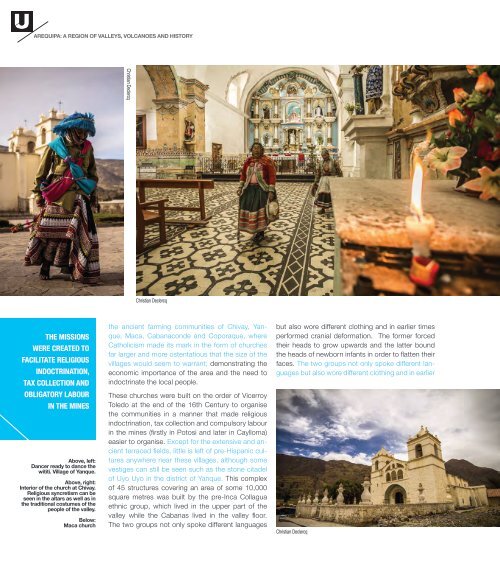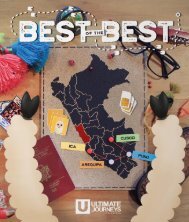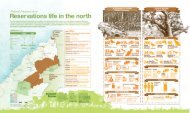Create successful ePaper yourself
Turn your PDF publications into a flip-book with our unique Google optimized e-Paper software.
AREQUIPA: A REGION OF VALLEYS, VOLCANOES AND HISTORY<br />
Christian Declercq<br />
Christian Declercq<br />
THE MISSIONS<br />
WERE CREATED TO<br />
FACILITATE RELIGIOUS<br />
INDOCTRINATION,<br />
TAX COLLECTION AND<br />
OBLIGATORY LABOUR<br />
IN THE MINES<br />
Above, left:<br />
Dancer ready to dance the<br />
wititi. Village of Yanque.<br />
Above, right:<br />
Interior of the church at Chivay.<br />
Religious syncretism can be<br />
seen in the altars as well as in<br />
the traditional costumes of the<br />
people of the valley.<br />
Below:<br />
Maca church<br />
the ancient farming communities of Chivay, Yanque,<br />
Maca, Cabanaconde and Coporaque, where<br />
Catholicism made its mark in the form of churches<br />
far larger and more ostentatious that the size of the<br />
villages would seem to warrant; demonstrating the<br />
economic importance of the area and the need to<br />
indoctrinate the local people.<br />
These churches were built on the order of Vicerroy<br />
Toledo at the end of the 16th Century to organise<br />
the communities in a manner that made religious<br />
indoctrination, tax collection and compulsory labour<br />
in the mines (firstly in Potosi and later in Caylloma)<br />
easier to organise. Except for the extensive and ancient<br />
terraced fields, little is left of pre-Hispanic cultures<br />
anywhere near these villages, although some<br />
vestiges can still be seen such as the stone citadel<br />
of Uyo Uyo in the district of Yanque. This complex<br />
of 45 structures covering an area of some 10,000<br />
square metres was built by the pre-Inca Collagua<br />
ethnic group, which lived in the upper part of the<br />
valley while the Cabanas lived in the valley floor.<br />
The two groups not only spoke different languages<br />
but also wore different clothing and in earlier times<br />
performed cranial deformation. The former forced<br />
their heads to grow upwards and the latter bound<br />
the heads of newborn infants in order to flatten their<br />
faces. The two groups not only spoke different languages<br />
but also wore different clothing and in earlier<br />
Christian Declercq<br />
/35

















